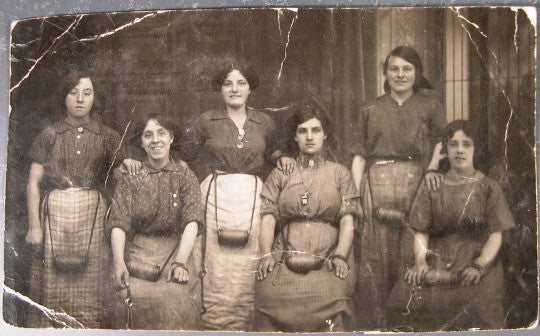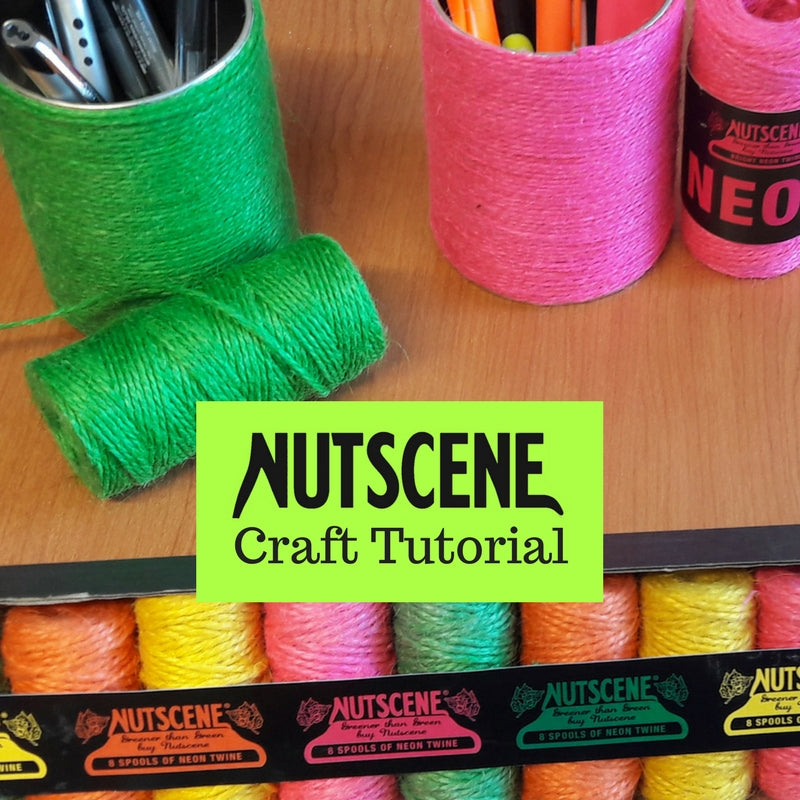
by Shona Young
A Trip into the Archive
With the The Chelsea Flower show in just a matter of weeks, we have spent some time in recent weeks getting all nostalgic, scanning our archive looking for inspiration from the past. With a proud heritage that spans more than 90 years, Nutscene have seen numerous transitions within the company and have subsequently adapted and innovated as the world has developed. We would love to share some of our memories, photographs and stories with you! So where did it all begin? The company began in 1922. The city of Dundee had been importing jute to manufacture twine, canvass and hessian sacking and the industry was booming. The city had been experiencing rapid expansion in the 100 years prior, and was commonly known as ‘jutetropolis’. This name was derived from the importation of jute and how it was impacting the growing population, the growth in the local economy and the rising employment levels in the city. The Dundee Heritage Trust host a wonderful exhibition at Verdant Works which beautifully transports you back 100 years to when the industry was thriving and Dundee was the home to a major industrial scene. Below is an image of some of the female work force from Verdant Works c1911. By the end of the nineteenth century the vast majority of Dundee’s population worked in the jute industry. At its peak It was responsible for an estimated 50,000 jobs and most notably, the large-scale employment of female factory workers. Dundee was supplying the whole world with jute. There was an estimated 131 jute mills located across the city. But why was Dundee such a prominent jute supplier? To start with, Dundee was a major ship building port. This enabled opportunity for the quick importation of raw resources from India and the subsequent exportation of jute based products to the world. With an industrial port in the city, it appeared pragmatic to begin the mass importation of jute and so the industry within the city began to rapidly gain momentum. Furthermore, with coarse linen’s already in production within Dundee, there was a work force readily available that was experienced and could adequately transfer their skill set. With significant world trade growth, the demand of jute based products was never higher - especially as many products were transported globally in the hessian sacks that were made from jute. Soon however, the jute in Dundee essentially cannibalised its own market and 1924 saw the industry take a downturn. Competitors from India were harvesting and refining the jute plant there and then for a much lesser cost. Many of the skilled workers from Dundee had already emigrated to India to work in the jute factories of Calcutta. The promise of higher wages and the opportunities for promotion persuaded many to leave their home and travel to India. Factories in India began to undercut the Dundee firms substantially and soon many Scottish factories began to close. Arguably, this resulted in one of the worst periods in Dundee’s history - unemployment was at an all time high with many more of the factories closing in the subsequent years. Nutscene and their Origins Since jute merchants Robertson Ireland and Co. first patented the Nutscene brand in September 1930, the company has not looked back. Nutscene has survived, beating the odds as it continues to flourish today. Nutscene has been involved in the manufacturing and processing of jute twines and ancillary products for the gardener since 1922. The company patented the first “pull from centre spool” of garden twine, which has been copied by many but never equalled. Since the beginning, Nutscene has been renowned for its quality of products. The name was stemmed (excuse the pun) from the fact the twine was green in colour, thus ‘not seen’ when it was tied to the plant. Initially, Nutscene were based out of the Braehead Works in Dundee, but later moved up the A90 to Forfar in Angus in 1988. Early adverts and our first company logo for the brand can be seen below and are proudly kept within our archive at our offices in Kingston near Forfar. This logo was attached to the original Nutscene Trade Mark application which was successfully awarded in 1930. 1939 was a time when the UK was at war and taxation was high, but Nutscene’s sales were rapidly increasing due to stabilised pricing. Many businesses in the UK struggled during WW2. With resources scarce, it proved a difficult time for many companies to prosper. Dundee was fortunate as it sustained little damage during the duration of the war compared to many other cities across the country. The port of Dundee was however, home to some of the allied submarine fleet. Above we can see a flyer from 1939 sent by Nutscene to potential retailers. It was sent in April - a time just prior to the outbreak of war. It informs customers of how “Nutscene prices are stabilised so that your margin of profit is certain”. The above image is from 1968 when the firm was based at the Braehead Works in Dundee. It features the image of a gentleman (we call him Wilbert) tying his sunflower with Nutscene twine. Wilbert has been used countless times in promotional literature by Nutscene and is somewhat of a mascot for the company. His gentlemanly attire, moustache and smoking pipe epitomise what Nustscene was seen as - a luxury twine that was the gardeners best friend. This concludes our early tour of the archive. We are still uncovering so much content that has been filed away for safe keeping through the years. But we will leave you with a little poem that we recently came across: The Nutscene Poem (Sep 1995) Where would the british gardener be, Without his Nutscene twine, Tomatoes, Dahlias and Sweet Peas, Are all held up just fine. His jacket would fly open, And trousers would fall down, Gates would all hang off the latch, And dogs would run to town. And when it comes to cars, There’s nothing quite so fine, For doing all the little things, As a piece of Nutscene twine. It holds the doors and bonnet’s shut, Keeps manifolds off the ground, If it wasn’t for the Nutscene twine, Bits would lie all around. Our 4 X 4 it goes like new, And is the smartest seen, Because its made like Nutscene twine, In British racing green!

